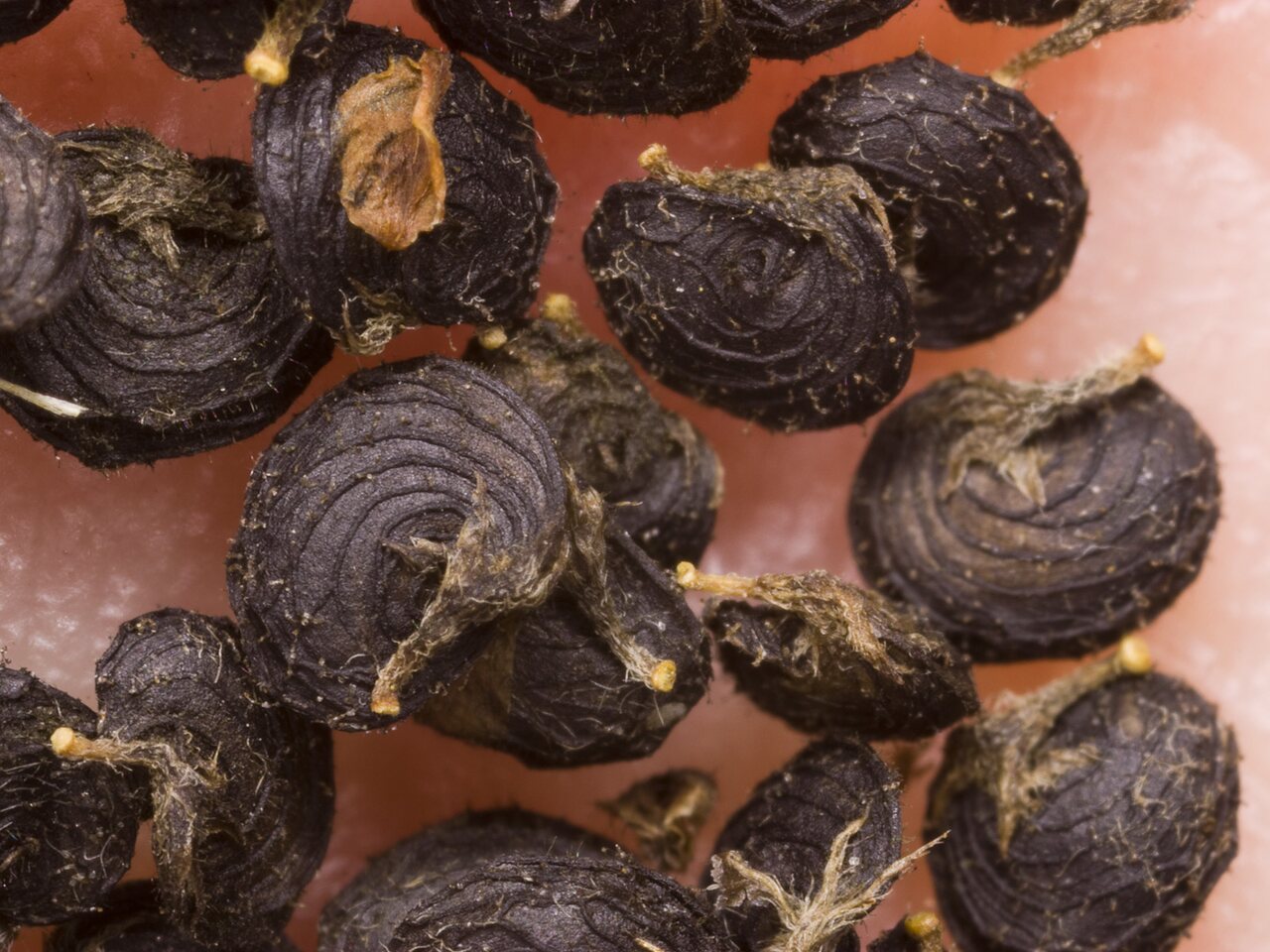
Medicago lupulina pods · apyninė liucerna, ankštys
- black medick, nonesuch, hop clover
- Hopfenklee, Hopfen-Luzerne, Zetterklee, Gelbklee
- apyninė liucerna
- apiņu lucerna
- lucerna nerkowata
A native of the old world, black medick is found throughout Europe, north Africa, the Near East, and most of Asia, including India, China, and Korea. It is naturalized in many countries. Like other legumes, the roots of black medick contain nodules hosting nitrogen-fixing bacteria. Plants that survive for more than one year may develop a deep tap root.
Medicago lupulina is an annual or short-lived perennial plant, growing each year from adventitious buds on the roots. Mature plants measure from 15 to 80 cm in height, with fine stems often lying flat at the beginning of growth and later erecting. The leaves are compound, each with three oval leaflets, carried on a short petiole; the center leaflet usually has a longer petiole. The leaflets are hairy, toothed toward the tip.
Black medick has small (2–3 mm) yellow flowers grouped in tight bunches (compact racemes). On larger plants the flower heads may reach 8 mm or more. The fruit is a single-seeded pod, 1.5 to 3 mm in diameter, that does not open upon maturation, but hardens and turns black when ripe. Each pod contains a single amber-colored seed.
Vienametis pupinių (Fabaceae) šeimos, liucernų (Medicago) genties augalas. Paplitęs Europoje, Azijoje, Šiaurės Amerikoje, šiaurinėje Afrikoje. Aukštis 15-60 cm. Lapai triskiaučiai. Žydi geltonais žiedynais, sudarytais iš 15-50 žiedų. Auga pakelėse, pievose. Tai svarbi pašarinė žolė.
‥
0 comments
Add a comment